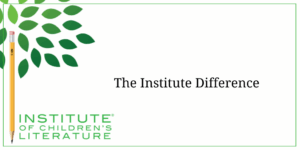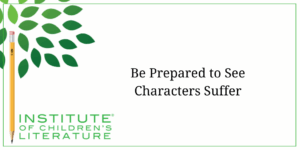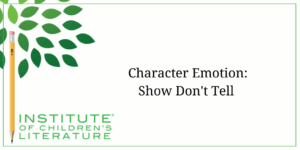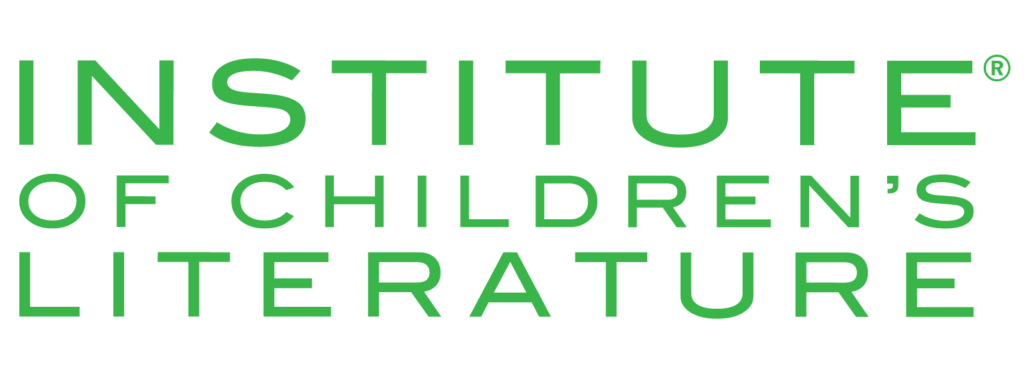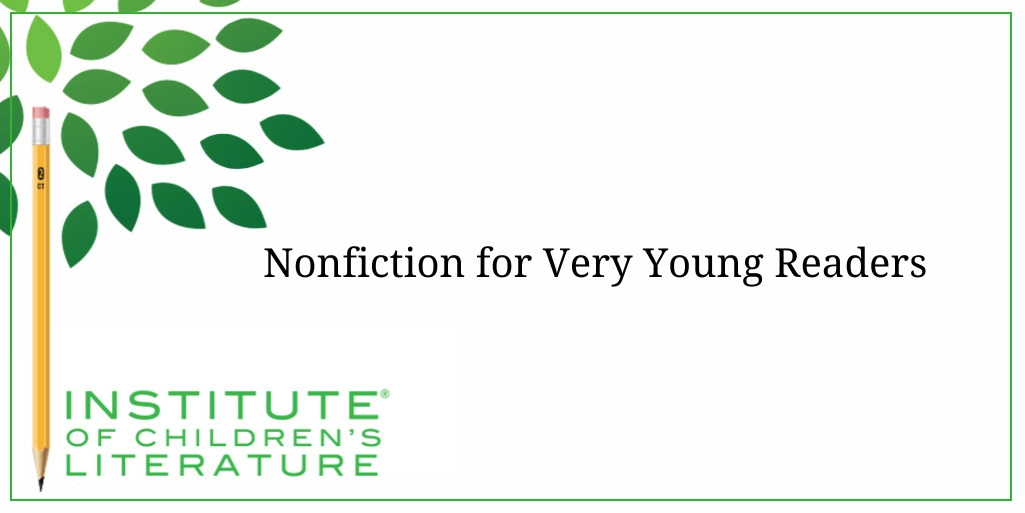
- Date: September 26, 2024
- Author: Jan Fields
- Category: Writing for Children Blog
- Craft, Expository Nonfiction, Narrative Nonfiction, Nonfiction, Writing Craft
We teach our students how to write and get published!
View our Course Catalog >
Writing Nonfiction for Very Young Readers
Writing nonfiction for very young children, whether you’re writing for children’s magazines, or writing picture books or board books, requires specific things from the writer. You must be able to focus, you must be able to say much with few words, and you need to be aware of both the scope of previous knowledge that very young children have and the sorts of things that interest them. Taken together, these can be harder than you’d think. So why would a writer take on nonfiction for small children? Because it’s important work.
 Literacy consultant and writer, Lindsay Barrett, says, “Including informational books in a toddler’s reading diet builds vocabulary and world knowledge. For some children, informational books are the ones that spark their love of reading.” In other words, starting the very youngest children off with quality nonfiction prepares them for success in reading and learning.
Literacy consultant and writer, Lindsay Barrett, says, “Including informational books in a toddler’s reading diet builds vocabulary and world knowledge. For some children, informational books are the ones that spark their love of reading.” In other words, starting the very youngest children off with quality nonfiction prepares them for success in reading and learning.
With this in mind, writing nonfiction for the very young is important enough that some of the best writers have done the work to overcome the challenges and create books and magazine nonfiction meant to be read aloud to small children. Maybe you’ll be among them.
Laser Focus and How to Manage It
Nonfiction for very young children can run from around 50 words to as many as a few hundred, but not more. That means you don’t get many words to accomplish your goal for the piece. Having a tight, clear focus will help you manage that.
For instance, you wouldn’t try to write a complete biography of a famous astronaut, but you might write a hundred or so words on what it was like to take a step on the moon and leave behind a footprint that would last forever. Very young children would understand that the moon is far away. They’ve seen it in the sky. They would also understand a footprint. They’ve made them. The tight focus on a single important moment in the life of an astronaut would tie to things the child does understand.
 When choosing a tight focus, keep in mind that the point is to expand the child’s world from a point of clear connection to a wider view that will require some thought and imagination on the part of the child. A child can visualize making a footprint in a thick silver boot but doing it on the moon will require more imagining.
When choosing a tight focus, keep in mind that the point is to expand the child’s world from a point of clear connection to a wider view that will require some thought and imagination on the part of the child. A child can visualize making a footprint in a thick silver boot but doing it on the moon will require more imagining.
One way that we help very young children make these more expanded connections is through visuals. All books and articles for very young children will have clear, concrete visuals. These will be essential for the piece to work. They give the child a springboard for imagining all that you say in the piece.
One thing that you should take care not to do is turn early nonfiction into lectures. Small children are no more interested in being nagged by books than we are as adults. Thus, publishers will tend to shy away from them. That doesn’t mean there are no books that are moral lessons for toddlers, but those kinds of books are hard to sell and rare to be picked up by a mainstream publisher.
It’s fine for your nonfiction to say something important or show something morally valuable, but only if you can do it in a way that doesn’t feel like a lecture.
Previous Knowledge and the Very Young
As shown by the previous example, nonfiction for very young children needs a point of connection to something the child understands, preferably something the child has experienced. For instance, you can have the moon in a book. It isn’t difficult for a parent to show the moon in the sky to a child. Equally, the sun, clouds, plants, bugs, animals, dirt, and water are all things the child will encounter when quite young. The goal when writing for the very young is to start from something that the child knows and use it to expand their thinking, knowledge, and experience.
 This is also why concept books are so common for very young children. These books often combine something the child has probably encountered with a concept to learn. For example, a book might count the flowers in a garden. One rose bush, two tall iris stalks, three swaying daisies, and so on. Again, the illustrations will help with understanding the new concept that each of these flowers has a name, as well as help with the concept of counting. Other common concepts are size, opposites, color, shapes, and senses. Because these kinds of concept books are common, it helps if your approach is different and innovative in some way.
This is also why concept books are so common for very young children. These books often combine something the child has probably encountered with a concept to learn. For example, a book might count the flowers in a garden. One rose bush, two tall iris stalks, three swaying daisies, and so on. Again, the illustrations will help with understanding the new concept that each of these flowers has a name, as well as help with the concept of counting. Other common concepts are size, opposites, color, shapes, and senses. Because these kinds of concept books are common, it helps if your approach is different and innovative in some way.
Another common thing for nonfiction for the very young to do is answer questions toddlers could have. These kinds of books often have the question right in the title. Two examples are Kate Ware’s What Can You See? In Space and Jill McDonald’s How Do Apples Grow? These books take something even young children can relate to such as the night sky and a common fruit and take them further to expand the child’s knowledge. The objects in the night sky are far away in space. An apple grows on a tree that begins as a seed. When crafting nonfiction for the very young, you will always need that touchpoint of what the child knows now before expanding into things they do not know.
Hot, Hot, Hot
Some topics seem to be endlessly fascinating to young children. Again, many of these take the child from something they know and experience (thus familiar) and expand it to something amazing and exciting. Timeless topics include animals (including dinosaurs), vehicles, construction, and rocks. These topics become books with an extreme focus on a single thing like a frog book that shows the egg-tadpole-frog growing cycle and not much else. They can also teach concepts like color with colorful pictures of frogs from the rainforest to illustrate each color. They can also illustrate opposites by comparing tiny frogs, no bigger than a fingernail to huge frogs as big as a dinner plate.
 These hot topic subjects can be a bridge to other topics as well. For instance, rock-loving kids might learn more earth science topics through their bright, colorful rock books. Kids who love bugs might be introduced to food webs. In How it Works: Dinosaur, author Amelia Hepworth takes the hot topic of dinosaurs and uses it to get kids to think about anatomy and body systems.
These hot topic subjects can be a bridge to other topics as well. For instance, rock-loving kids might learn more earth science topics through their bright, colorful rock books. Kids who love bugs might be introduced to food webs. In How it Works: Dinosaur, author Amelia Hepworth takes the hot topic of dinosaurs and uses it to get kids to think about anatomy and body systems.
Kinds of Nonfiction
When we think of nonfiction books for kids, most of us think about expository (nonfiction that gives us information about a single focused topic in a structure that has a beginning, middle, and end), narrative (the tiny true story book), and browsable (cool facts books that can be opened to any page and read in any order without making less sense. Browsable books are not uncommon in toddler books, though the “cool fact” might amount to showing a photo of a cow and putting the word “cow” under it.) Another type of nonfiction to consider for toddlers is active nonfiction.
Children’s magazines often like active nonfiction that encourages children to move around. For example, a magazine piece might tell us that bunnies hop, kittens stretch, lambs scamper, etc, and include facing photographic illustrations showing an animal doing the action and a small child copying it. That kind of piece is designed to get the child to move around.
 Active nonfiction might also be written to get children to explore the outdoors by picking up a leaf, rubbing a rock, etc., to encourage both outdoor activity and scientific observation.
Active nonfiction might also be written to get children to explore the outdoors by picking up a leaf, rubbing a rock, etc., to encourage both outdoor activity and scientific observation.
Equally, active nonfiction might include craft books or even cookbooks (which are mostly assembly books since tiny children don’t do well around hot things). In any active nonfiction, the writer must keep both safety and skill in mind. If the idea is unsafe, publishers won’t be interested. And if the skills required are too hard, the activity will only frustrate children.
Some novelty formats of books become a kind of active nonfiction as they encourage children’s fine motor skills through lifting flaps, peering through holes in the book, or exploring different textures of materials glued to the book’s pages. Thus, books can teach and expand a toddler’s world without using words at all.
Summing Up
Writing for very young children isn’t easy, though the extremely short word counts and the simple look of the final product may lull people into believing it is. Writers for very young children must master skills of brevity, focus, and thinking outside the box. The rewards are often fairly small in terms of money, but when you realize that the books and nonfiction articles you write for the youngest of children are helping them start a life of wonder, exploration, and joy, the rewards are bigger than we ever imagined.
Related Articles
With over 100 books in publication, Jan Fields writes both chapter books for children and mystery novels for adults. She’s also known for a variety of experiences teaching writing, from one session SCBWI events to lengthier Highlights Foundation workshops to these blog posts for the Institute of Children’s Literature. As a former ICL instructor, Jan enjoys equipping writers for success in whatever way she can.

